Dexafort
Dexafort is indicated for use as an anti-inflammatory and anti-allergic agent in cattle and for the treatment of primary ketosis in cattle. The product can also be used to induce parturition in cattle
DESCRIPTION
Dexafort (Dexafort) – a hormonal drug designed to stop inflammatory processes and diseases that have an allergic and autoimmune etiology in animals. In appearance it is a suspension of white color.
STRUCTURE
Dexafort in 1 ml contains 2.67 mg of dexamethasone phenylpropionate and 1.32 mg of dexamethasone sodium phosphate (which is equivalent to 3 mg of dexamethasone) as active substances, and as excipients: sodium chloride – 4.0 mg, sodium citrate – 11.4 mg, benzyl alcohol – 10.4 mg, methylcellulose MH50 – 0.4 mg, tragant – 1.0 mg, sodium hydroxide and hydrochloric acid until a pH of 7.0-7.8 is reached, water for injection up to 1 ml.
PHARMACOLOGICAL PROPERTIES
Dexamethasone, which is part of Dexafort, is a synthetic analogue of the glucocorticosteroid hormone of the adrenal cortex – cortisol and has a more pronounced glucocorticosteroid effect, has anti-inflammatory, decongestant, desensitizing, antiallergic effects. The mechanism of action of the hormone is to block the release of inflammatory mediators by eosinophils, including prostaglandins, which potentiate the inflammatory process. Dexafort stimulates steroid receptors of lymphocytes, promoting the biosynthesis of lipocortins, which have decongestant activity. It inhibits the proliferation of lymphoid tissue and cellular immunity, and also disrupts the kinetics of T-lymphocytes, reducing their cytotoxic activity.
Dexafort is distinguished by the speed of action and the duration of the effect. After intramuscular administration, dexamethasone disodium phosphate immediately begins to be absorbed from the injection site. Dexamethasone phenylpropionate is absorbed more slowly and provides a lasting effect. The maximum plasma concentration of dexamethasone is detected after 60 minutes.The therapeutic concentration in the blood serum lasts 30-96 hours, depending on the type of animal. The bioavailability with intramuscular injection is 100%. Biotransformation occurs in the liver and partially in the fibroblasts involved in the metabolism. Metabolites are mainly excreted through the liver and kidneys.By the degree of exposure to the body, Dexafort belongs to moderately hazardous substances (hazard class 3 according to GOST 12.1.007).
DOSAGE AND ADMINISTRATION
Dexafort is used to relieve inflammatory processes and diseases that have an allergic and autoimmune etiology in animals (allergic dermatitis, eczema, post-traumatic edema, bronchial asthma, joint diseases, acute mastitis).
For cattle, horses, sheep, goats, pigs, Dexafort is administered once intramuscularly at a dose of 0.02 ml / kg (0.06 mg / kg), dogs and cats at a dose of 0.05 ml / kg (0.15 mg / kg ) intramuscularly or subcutaneously. Before use, Dexafort is thoroughly shaken.
If necessary, Dexafort is reintroduced after 7 days.
In the treatment of inflammation complicated by pathogenic and conditionally pathogenic bacterial microflora, Dexafort is prescribed only in combination with broad-spectrum antibacterial drugs.
For the treatment of laminitis in horses, Dexafort is prescribed only in the very early stages of the disease.
SPECIAL INSTRUCTIONS
There were no specific features of the action during the first administration of the drug and during its withdrawal.
A drug is usually used once.
In case of an overdose, horses may experience drowsiness.
To achieve a quick therapeutic effect in animals with high hypersensitivity or at high risk of developing anaphylactic shock, the combined use of Dexafort with antihistamines and / or epinephrine is recommended.
Slaughter for cattle meat is allowed after 48 days, sheep, goats, pigs – after 60 days, horses – after 24 days. Milk obtained from animals can be used in food no earlier than 5 days later. In the event of a forced slaughter earlier than the specified time, animal meat can be used as feed for fur animals.
CONTRAINDICATIONS
Dexafort is contraindicated in viral and fungal infections, diabetes, osteoporosis, hyperadrenocorticism, kidney disease, heart failure. It is forbidden to use in animals with ulcerative lesions in the gastrointestinal tract, with corneal ulcers. Use with caution in the early stages of pregnancy, as this can cause fetal abnormalities.
Use in the last trimester of pregnancy is contraindicated, as this can lead to premature birth or abortion.
Dexafort should not be used simultaneously with vaccines due to the immunosuppressive effect of corticosteroids.
SIDE EFFECTS
Side effects and complications when using Dexafort in accordance with this instruction, as a rule, are not observed. With prolonged use, the manifestation of Cushing’s syndrome is possible, which causes redistribution of fat in the body, muscle weakness, weight loss and osteoporosis. The appearance of polyuria, polydipsia and polyphagy is possible. The use of corticosteroids in lactating cows can cause a short-term decrease in milk productivity.
SHELF LIFE AND STORAGE
Shelf life 36 months. Store at a temperature of 15-25 ° C.
PACKAGING
50 ml glass bottles packed in individual cardboard boxes.

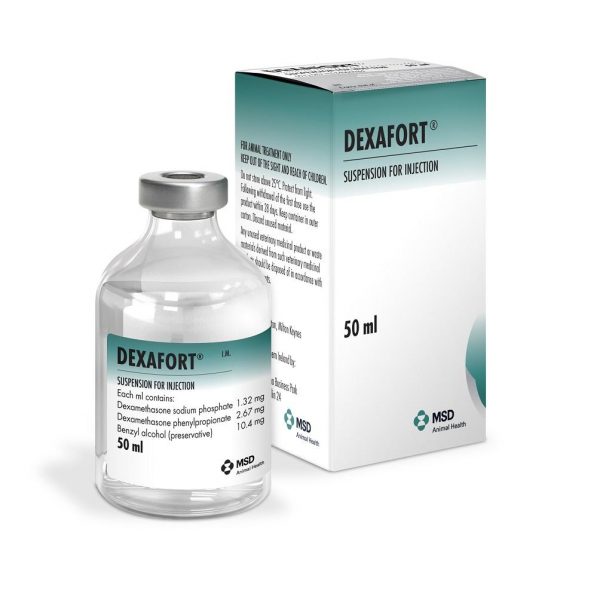
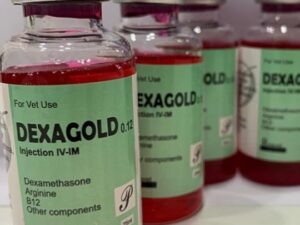
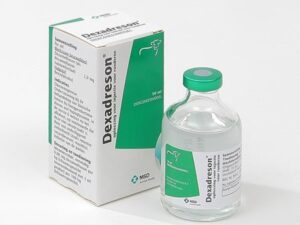
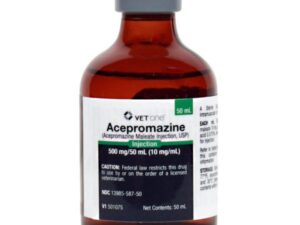


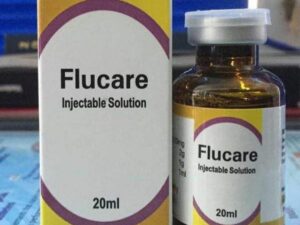
Reviews
There are no reviews yet.